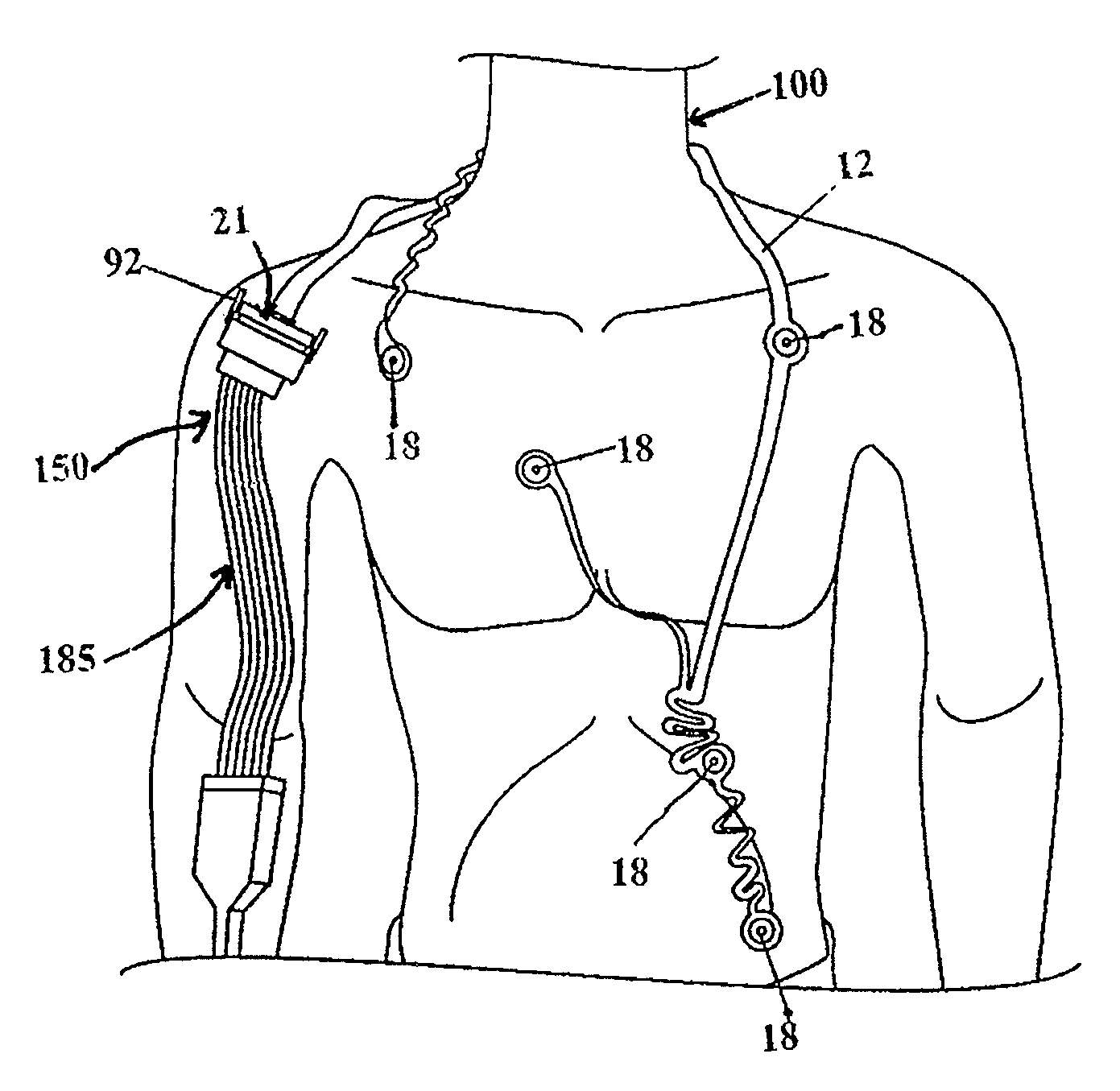Radiolucent electrode assembly
a technology of lead wire and assembly, which is applied in the field of radiolucent lead wire replacement assembly, can solve the problems of difficult to make the proper connection between the electrode and the telemetry unit, difficult to meet the needs of emergency situations, and difficult to restrict the patient's movement, etc., to achieve the effect of improving the radiolucency of these types of monitoring devices and increasing patient comfor
- Summary
- Abstract
- Description
- Claims
- Application Information
AI Technical Summary
Benefits of technology
Problems solved by technology
Method used
Image
Examples
Embodiment Construction
[0047]For a better understanding of the present invention, reference may be had to the following detailed description taken in conjunction with the appended claims and the accompanying drawings.
[0048]Referring to FIG. 1, the chest assembly 12 is preferably a one-piece flexible circuit that connects a plurality of electrode connectors 18 whereby the electrode connectors 18 are configured to connect to electrodes 20 or electrically conductive adhesives. Preferably, the electrode connectors 18 have snap terminals that connect to electrodes 20 having snap terminals. As shown in detail in FIG. 3, each electrode connector 18 connects to an electrically conductive element or trace 39 for transmitting electrical signals. The electrically conductive elements or traces 39 run along the chest assembly 12 and connect to a chest assembly connector 21.
[0049]Alternatively, the chest assembly 12 may be constructed with electrode conductors, instead of electrode connectors. In such an embodiment, ea...
PUM
 Login to View More
Login to View More Abstract
Description
Claims
Application Information
 Login to View More
Login to View More - R&D
- Intellectual Property
- Life Sciences
- Materials
- Tech Scout
- Unparalleled Data Quality
- Higher Quality Content
- 60% Fewer Hallucinations
Browse by: Latest US Patents, China's latest patents, Technical Efficacy Thesaurus, Application Domain, Technology Topic, Popular Technical Reports.
© 2025 PatSnap. All rights reserved.Legal|Privacy policy|Modern Slavery Act Transparency Statement|Sitemap|About US| Contact US: help@patsnap.com



